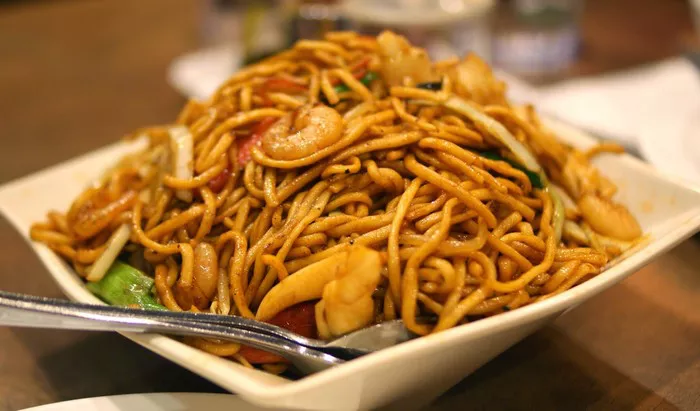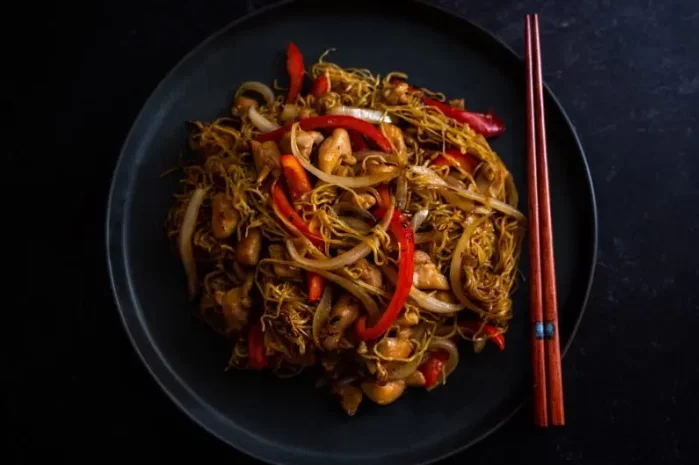Chinese cuisine is renowned worldwide for its rich flavors, diverse ingredients, and mouthwatering dishes. Noodles, a staple in Chinese cooking, come in various shapes, sizes, and textures, satisfying the cravings of millions. However, for individuals with gluten intolerance or celiac disease, navigating the world of Chinese noodles can be a challenging task.
Gluten is a protein found in wheat, barley, rye, and their derivatives. Consuming gluten can lead to adverse health effects for those with gluten sensitivity, wheat allergies, or celiac disease. Fortunately, there are gluten-free alternatives for noodle enthusiasts to enjoy the deliciousness of Chinese cuisine without compromising their health.
In this article, we will explore some gluten-free Chinese noodle options and highlight their distinctive characteristics, making it easier for you to identify them on the menu.
1. Rice Noodles: The Classic Gluten-Free Choice
Rice noodles are a traditional favorite in Chinese cuisine and a go-to gluten-free option. Made from rice flour and water, these noodles are versatile, easy to cook, and suitable for various dishes. They have a slightly chewy texture and can be found in different widths, ranging from thin to wide.
2. Mung Bean Noodles: A Nourishing Alternative
Mung bean noodles, also known as glass noodles or cellophane noodles, are another popular gluten-free choice. Made from mung bean starch, these translucent noodles are often used in stir-fries, soups, and spring rolls. They are light, delicate, and absorb the flavors of the dish they are cooked in.
3. Sweet Potato Noodles: A Nutrient-Rich Delight
Sweet potato noodles, made from sweet potato starch, are a delicious and nutritious gluten-free option. They have a slightly sweet taste and a soft, chewy texture. These noodles are commonly used in hot pots and stir-fries, adding a delightful twist to the dish.
4. Buckwheat Noodles: A Hearty and Earthy Flavor
Buckwheat noodles, also known as soba noodles, originate from Japan but are commonly found in Chinese cuisine as well. These noodles are made from buckwheat flour and have a nutty, earthy flavor. While some varieties may contain wheat flour, it is possible to find 100% buckwheat soba noodles that are gluten-free.
5. Bean Thread Noodles: A Tangle of Gluten-Free Goodness
Bean thread noodles, also known as vermicelli or bean vermicelli, are thin, transparent noodles made from various types of beans, such as mung beans or green beans. They are gluten-free and suitable for a wide range of dishes, including stir-fries, soups, and salads.
6. Tofu Shirataki Noodles: The Low-Calorie Option
Tofu Shirataki noodles are a gluten-free, low-calorie alternative to traditional wheat-based noodles. These noodles are made from a blend of konjac yam and tofu, resulting in a chewy, gelatinous texture. While not traditionally Chinese, they can be used in Chinese-inspired dishes as a healthier, gluten-free substitution.
7. Zucchini Noodles: The Grain-Free Choice
For those looking to avoid grains altogether, zucchini noodles, also known as zoodles, are an excellent option. These noodles are made by spiralizing fresh zucchini into noodle-like shapes. While they don’t have the same texture as traditional wheat-based noodles, they provide a refreshing and healthy base for various Chinese-inspired dishes.
8. Gluten-Free Noodle Brands to Consider
When purchasing gluten-free Chinese noodles, it’s essential to read the labels carefully to ensure they don’t contain any gluten-containing ingredients. Some reputable gluten-free noodle brands to consider include:
Lotus Foods: This brand offers gluten-free rice noodles, as well as buckwheat soba noodles made from 100% buckwheat flour.
Annie Chun’s: Annie Chun’s provides a variety of gluten-free options, including rice noodles and mung bean noodles.
Explore Cuisine: This brand specializes in bean-based noodles, offering a range of gluten-free options like mung bean fettuccine and black bean spaghetti.
King Soba: King Soba produces gluten-free and organic buckwheat noodles, including a variety of flavored options.
Miracle Noodle: Miracle Noodle offers tofu shirataki noodles, perfect for those seeking a low-calorie, gluten-free alternative.
Tips for Navigating Chinese Restaurants
Eating out at Chinese restaurants while adhering to a gluten-free diet requires some careful consideration. Here are some tips to help you enjoy a gluten-free Chinese dining experience:
1. Communicate Your Dietary Needs: When you arrive at the restaurant, inform your server about your gluten-free dietary requirements. They can guide you through the menu and recommend suitable gluten-free noodle options or dishes.
2. Avoid Cross-Contamination: If the restaurant offers both gluten-containing and gluten-free noodles, ensure they cook your noodles separately to avoid cross-contamination.
3. Check Sauces and Seasonings: Some Chinese sauces and seasonings may contain gluten. Ask your server about the ingredients used in the dishes and whether gluten-containing sauces can be substituted with gluten-free alternatives.
4. Stick to Simple Preparations: Opt for dishes with simple, clear broths or light sauces. These are more likely to be gluten-free compared to dishes with thickened sauces or heavy breading.
5. Embrace Rice Dishes: Many Chinese restaurants offer rice-based dishes that are inherently gluten-free, such as fried rice or rice porridge (congee).
Conclusion
Having gluten intolerance or celiac disease doesn’t mean you have to miss out on the delights of Chinese noodles. With the variety of gluten-free options available, you can still indulge in your favorite Chinese dishes without compromising your health. From classic rice noodles to innovative zucchini noodles, the gluten-free Chinese noodle market has something for everyone. Just remember to communicate your dietary needs at restaurants and be vigilant about cross-contamination. So go ahead, explore the world of gluten-free Chinese noodles, and savor the unique flavors that this incredible cuisine has to offer!


























